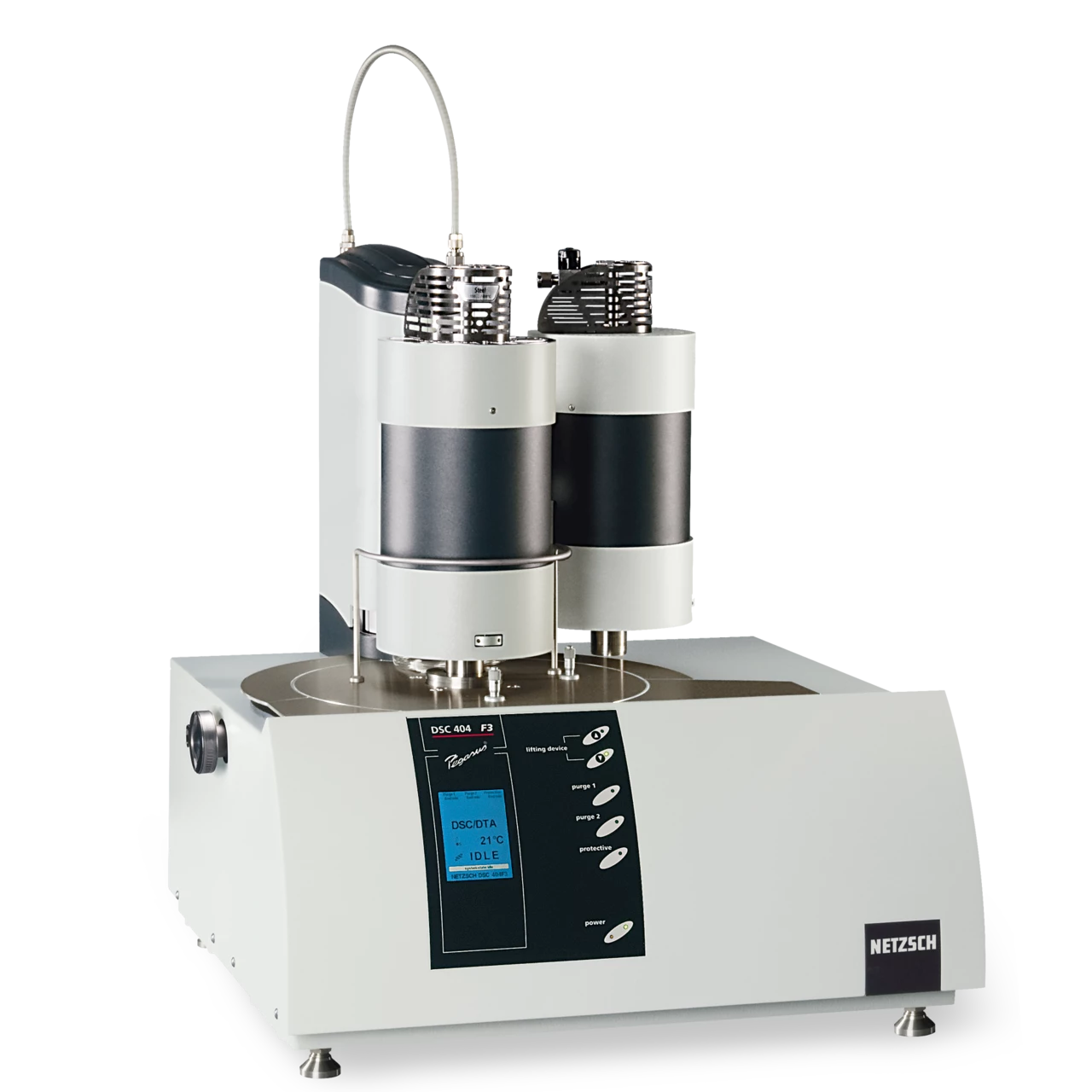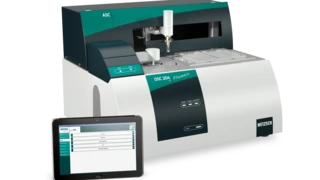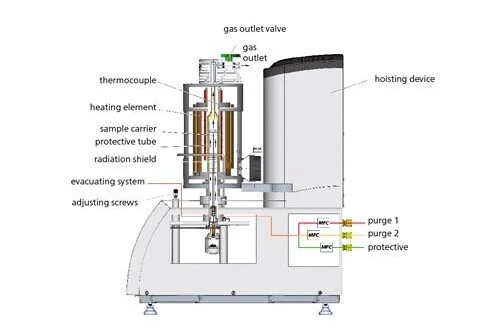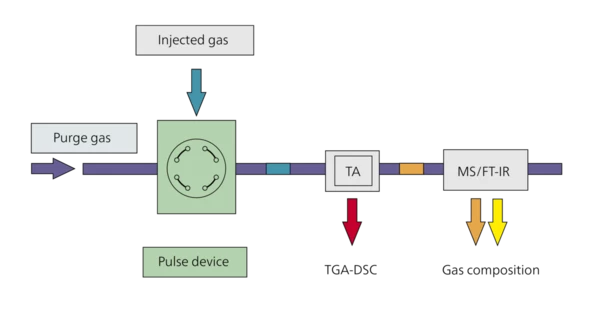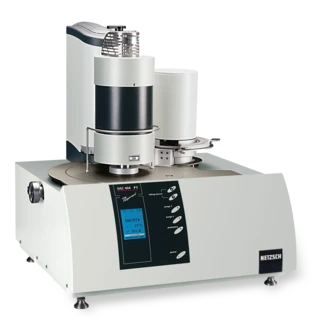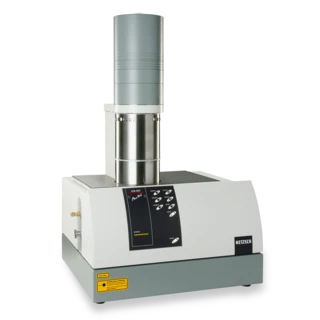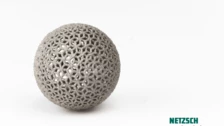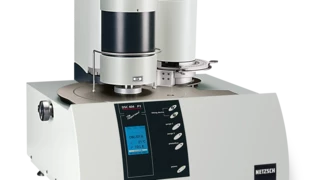Highlights
مرونة رائعة في التحليل الحراري
DSC 404 F3 Pegasus®، مسعر المسح الضوئي التفاضلي عالي الحرارة DSC 404 F3 Pegasus®، هو جزء من خط إنتاج NETZSCH F3 الاقتصادي، المصمم خصيصًا لتلبية متطلبات توصيف المواد المقارنة ومراقبة الجودة.
يمكن تشغيل جهاز المسعر بالمسح الضوئي التفاضلي عالي الحرارة DSC 404 F3 Pegasus®، مسعر المسح الضوئي التفاضلي عالي الحرارة، من -150 درجة مئوية إلى 2000 درجة مئوية مع العديد من أجهزة استشعار DTA وDSC التي يمكن للمستخدم تبديلها بسهولة وأنواع مختلفة من الأفران (يرجى الاطلاع على الملحقات).
يمكن تطهير حجرة العينة بغازات خاملة أو مؤكسدة من أجل إزالة الغازات المتطايرة من العينة.
نظام القياس محكم التفريغ (10-4 ملي بار).
Method
The DSC 404 F1 as well as the F3 Pegasus® systems operate according to the heat flux principle. With this method, a sample and a reference are subjected to a controlled temperature program (heating, cooling or isothermal). The actual measured properties are the temperature of the sample and the temperature difference between sample and reference. From the raw data signals, the heat flow difference between sample and reference can be determined.

طلب عرض أسعار

More on the Functional Principle of a Heat-Flux DSC
A DSC measuring cell consists of a furnace and an integrated heat-flux sensor with designated positions for the sample and reference pans.
The sensor areas are connected to thermocouples or may even be part of the thermocouple. This allows for recording both the temperature difference between the sample and reference side (DSC signal) and the absolute temperature of the sample or reference side.
Due to the heat capacity (cp) of the sample, the reference side (usually an empty pan) generally heats faster than the sample side during heating of the DSC measuring cell; i.e., the reference temperature (TR, green) increases a bit faster than the sample temperature (TP, red). The two curves exhibit parallel behavior during heating at a constant heating rate – until a sample reaction occurs. In the case shown here, the sample starts to melt at t1. The temperature of the sample does not change during melting; the temperature of the reference side, however, remains unaffected and continues exhibiting a linear increase. When melting is completed, the sample temperature also begins to increase again and, beginning with the point in time t2, again exhibits a linear increase.
The differential signal (ΔT) of the two temperature curves is presented in the lower part of the image. In the middle section of the curve, calculation of the differences generates a peak (blue) representing the endothermic melting process. Depending on whether the reference temperature was subtracted from the sample temperature or vice versa during this calculation, the generated peak may point upward or downward in the graphs. The peak area is correlated with the heat content of the transition (enthalpy in J/g).
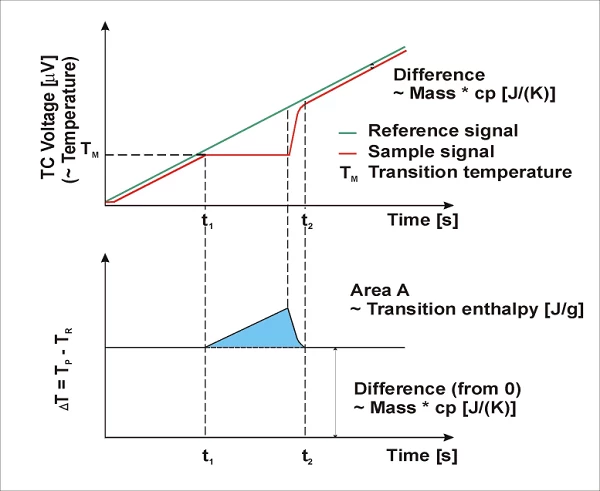
Specifications
البيانات الفنية
نطاق درجة الحرارة
معدلات التدفئة
0.001 كلفن/دقيقة إلى 50 كلفن/دقيقة
مستشعرات القياس
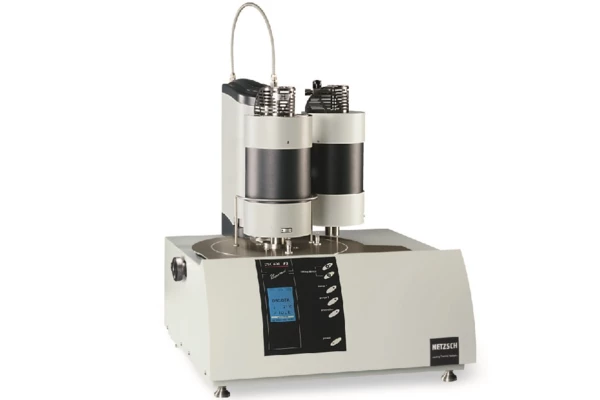
أنواع المزدوجات الحرارية:
S، E، E، K، B، W/Re،SProtected، P
الغلاف الجوي:
خامل، مؤكسد، ثابت، ديناميكي
تمديد مع فريد من نوعه OTS®نظام
(اختياري)
Software
Proteus®: Excellent Thermal Analysis Software
The DSC 404 F3 Pegasus® runs under Proteus®Software on Windows®. The Proteus® Software includes everything you need to carry out a measurement and evaluate the resulting data. Through the combination of easy-to-understand menus and automated routines, a tool has been created that is extremely user-friendly and, at the same time, allows sophisticated analysis.The Proteus® software is licensed with the instrument and can of course be installed on other computer systems.
DSC features:
- Determination of onset, peak, inflection and end temperatures
- Automatic peak search
- Transformation enthalpies: analysis of peak areas (enthalpies) with selectable baseline and partial peak area analysis
Complex peak analysis with all characteristic temperatures, area, peak height and half-width - Comprehensive glass transition analysis
- BeFlat® for Automatic baseline correction (DSC, DTA)
- Degree of crystallinity
- OIT (oxidative induction time) evaluation
- Specific heat capacity determination (optional)
- DSC correction: evaluation of exo- and endothermal effects under consideration of system time constants and thermal resistance values (optional)
Further Advanced Software Options
The Proteus® modules and expert software solutions offer further advanced processing of the thermoanalytical data for more sophisticated analyses.

Consultancy & Sales
Do you have further questions about the instrument, the method and would you like to speak to a sales representative?
Service & Support
Do you already have an instrument and need technical support or spare parts?
المستقبل الآن!
أحضر أجهزتنا إلى مختبرك بنقرة زر واحدة.
ما عليك سوى مسح رمز الاستجابة السريعة ضوئياً والحصول على نموذج ثلاثي الأبعاد للأداة مباشرةً على هاتفك المحمول أو جهازك اللوحي. وبمساعدة أحدث تقنيات الواقع المعزز (الواقع الاصطناعي)، يمكن بسهولة وضع النموذج ثلاثي الأبعاد في مختبرك بالحجم الطبيعي الأصلي. تعتمد هذه الوظيفة على المتصفح ولا تحتاج إلى تطبيق.
اكتشف ذلك واندهش!
Application Literature

